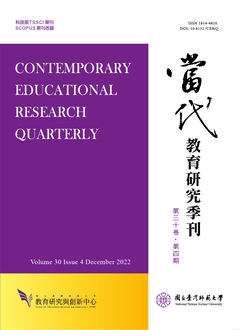

為因應臺灣幼稚園與托兒所整合後的幼兒園教保活動課程大綱,教育部於2006~2008年底委託國內學者,針對幼托新課綱的六大領域學習指標,進行研究計畫。本研究是以「美感領域」的實徵研究成果為基礎,透過其中「戲劇面向」之指標和量表建構歷程,來呈現「美感領域」指標的發展訂定。第一年研究,先經由文獻探討美感及戲劇遊戲之理論基礎,建構美感領域戲劇量表與指標之初稿。接著,經過專家效度與兩階段預試,完成量表之定稿。之後,透過分層隨機抽樣,在全國25個縣市(含離島)中抽取1,330位3~6歲不同年齡之幼兒(3歲、4歲和5歲),進行全國施測。回收樣本以12.0版SPSS軟體進行統計分析,瞭解不同年齡層幼兒在各項戲劇扮演能力之表現。第二年將資料轉換成「美感領域」戲劇學習面向之指標,以施測中70%以上幼兒可以達到的能力,轉換成文字敘述。最後,透過幾次全國專家諮詢會議,持續修正美感指標。研究者希望研究成果奠定「美感領域」在學前階段臺灣幼兒發展之基礎研究,而指標建構的歷程及實徵研究資料可提供後續研究之參考。
In order to prepare for the Curriculum Guideline after the integration of preschool and kindergarten in Taiwan, the Ministry of Education commissioned some scholars to construct the learning indicators for six learning domains in the new preschool and kindergarten curriculum guideline between 2006 and 2008. Based on the empirical research findings, this paper is intended to use the process of constructing a drama indicator and scale as an example to show the development of the Aesthetic learning indicators. In the first year, preliminary drafts of the drama scale and learning indicator were individually built through literature reviews on theories of Aesthetic Domain and Dramatic Play. Then, the drafts were validated and revised by experts in the field. Meanwhile, those drafted scales were revised through pilot tests in two different phases. Afterwards, a national survey was conducted through stratified random sampling in 25 cities and counties in Taiwan (including small islands outside Taiwan) in which 1,330 young children at 3 different age level (3’s, 4’s and 5’s) were involved. Through statistical analysis with SPSS software, the performances of Dramatic Play behaviors of children at different age levels were analyzed. In the second year the statistical data which reflected 70 percent of the children’s behaviors meeting the standards for Dramatic Play at different age level were converted into the drama learning indicators in the Aesthetic Domain. The new draft of indicators was under further revisions through several national expert advisory conferences. It is hoped that the findings will provide foundations for theory and studies in both the Aesthetic Domain of young children in Taiwan and the process of constructing learning indicators, and that the empirical data will provide references for the follow-up study.

本著作係採用創用 CC 姓名標示-非商業性 3.0 台灣 授權條款授權.
本刊國立台灣師範大學教育研究與創新中心
106台北市和平東路一段162號 | 電話: 02-7749-3670 | E-mail: cerecerq@gmail.com
教創中心 | 師大 | 電子報 | 線上投審系統
本刊由國家科學及技術委員會人文社會科學研究中心補助經費
© 2014 CERI-NTNU
